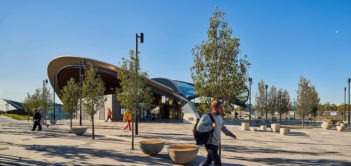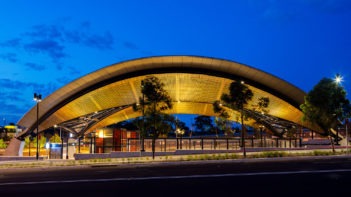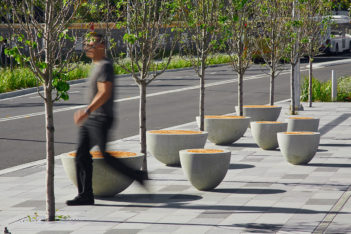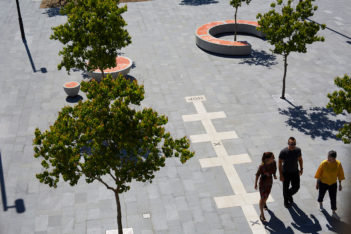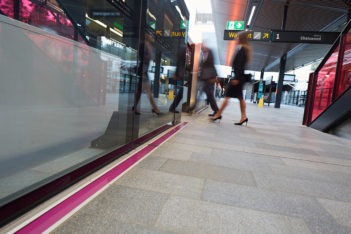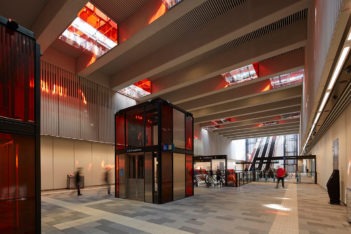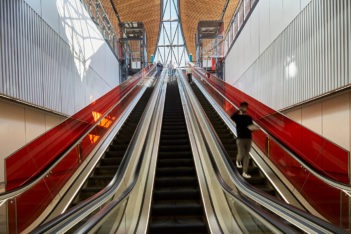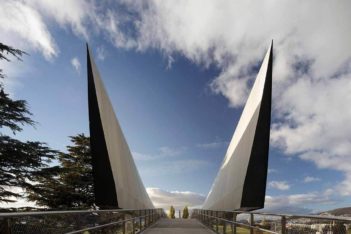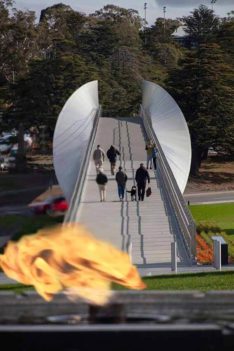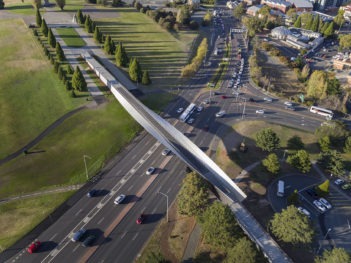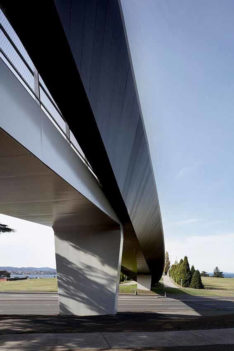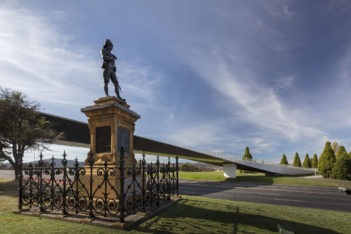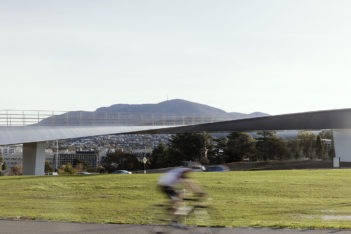2020 National Architecture Award Winners
Urban Design
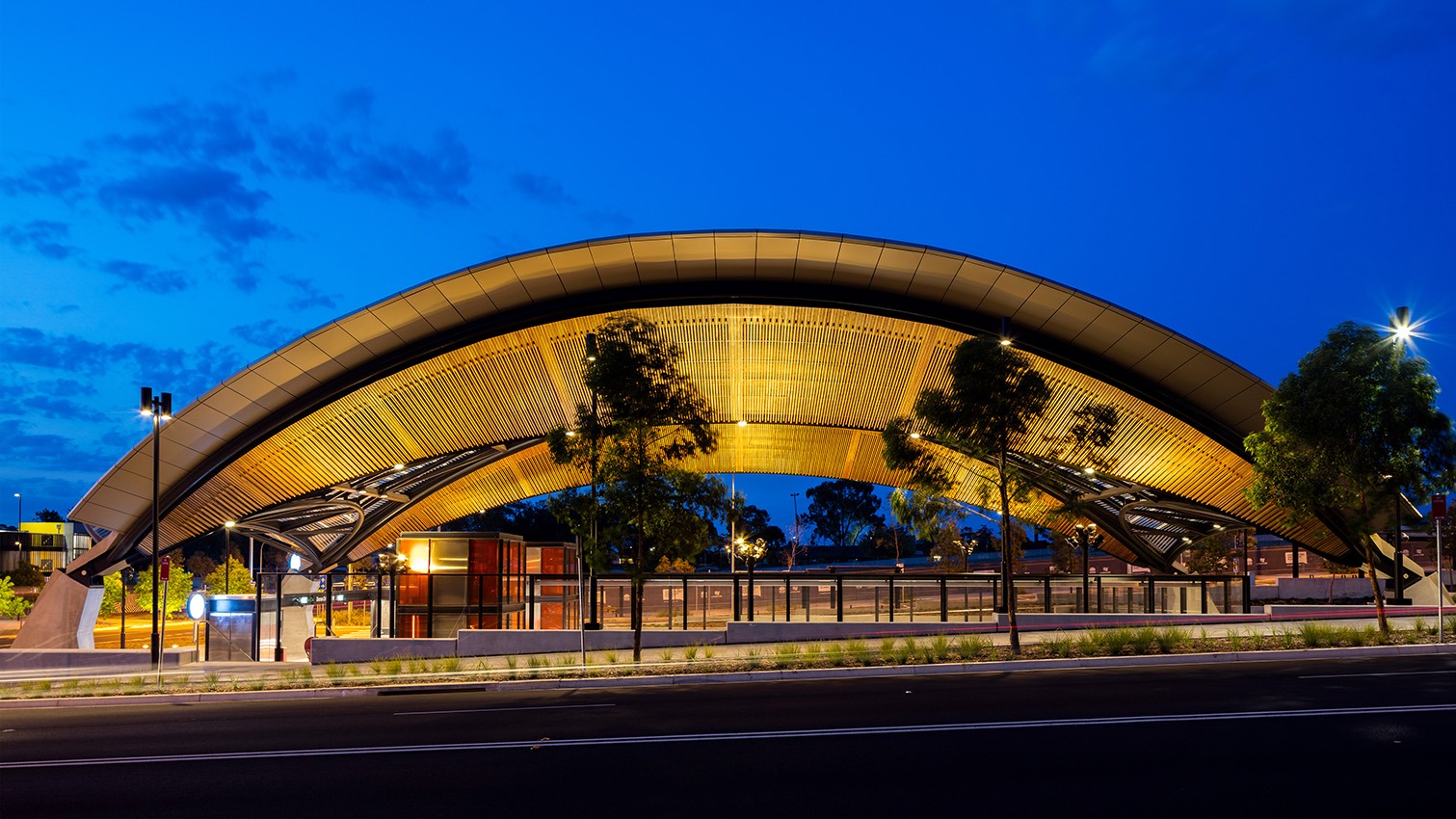
2020 National architecture awards - Urban design
The Walter Burley Griffin Award
Metro Northwest | Hassell in collaboration with Turpin Crawford Studio and McGregor Westlake Architecture | NSW
Built on the land of the Bidjigal and Cammeraygal peoples
Sydney’s Metro Northwest is an urban transit project at the metropolitan scale, integrating eight new stations and their surrounding public spaces through architecture, landscape and art. The urban strategy is a pattern book of elements unifying the stations along the 36-kilometre corridor, with subtle shifts of scale, form, colour and landscape. Each station precinct is uniquely adjusted in response to the local alignment, topography and history, giving meaningful identity to each centre. The art concept further refines this identity by referencing the past to shape the future paradigm.
Orchards that historically populated the city’s north-west are reinterpreted through a fruity colour palette that defines the train journey and signals each station, starting with cherry-red at Cherrybrook. The orchard grid also gives a poetic logic to the station plazas through urban tree groves, coloured skylit lanterns, whimsical furniture and mist installations between the trees. Colour and light infuse these elements as well as the station interiors, lifts, stairs and escalators, creating a fluid interplay between inside and outside.
At the heart of this city-shaping project is a generous ensemble of quality public spaces that simply delight. Streets, plazas, shady groves and calm, light-filled interiors are counterbalanced by the play of light bathing each station in a kaleidoscope of colour that enlivens even the subterranean concourses. The result is a richly layered public realm of memorable and uplifting spaces, all seamlessly connected.
This urban transit project is a game changer. By reaffirming the forgotten joy of train travel, it demonstrates that public infrastructure can be more than utilitarian. More importantly, by consciously crafting enduring spaces for people to enjoy in each and every community along the corridor, it creates an array of settings for public life for years to come.
Practice Team
- Ross de la Motte, Design Architect
- Geoff Crowe, Graduate of Architecture
- Jason Hammond, Design Architect
- Tom Withecombe, Graduate of Architecture
- Chris Carr, Design Architect
- Yee Woon Juen, Graduate of Architecture
- Michael Luders, Graduate of Architecture
- Keith Allen, Graduate of Architecture
- Michael White, Design Architect
- Peter Monckton, Design Architect
- Catherine Zhuang, Project Architect
- Phil Meehan, Project Architect
- Kutay Ozay, Graduate of Architecture
- Alexander Chow, Graduate of Architecture
- Leo Carson, Project Architect
- Troy Cook, Project Architect
- Allison Hortz, Graduate of Architecture
- Liam Fitzgerald, Project Architect
- Shane Marshall, Project Architect
- Emma Townsend, Project Architect
- Benjamin Charlton
- Hanh Nguyen
- Neil Bartlett, Graduate of Architecture
- Richard Huxley
- Rocco Dascoli, Graduate of Architecture
- Julieanne Boustead,
- Angus Bruce
- Andrew Ewington
- Anthony Charlesworth
- Callum Bryan-Mathieson
- Anne Lucas
- Chris Tidswell
- Carine Macleod
- Grace Rummery
- Matt Watson
- Riley Field
- Adam Griffin, Graduate of Architecture
Consultant / Construction Team
- John Holland CPB Contractors Joint Venture, Builder
- Turpin Crawford Studio, Artist
- McGregor Westlake Architecture, Artist
- Atlas Industries, Documentation
- Assemble, Documentation
- Ridley and Co, Documentation
- Mott MacDonald, Engineer
- SMEC, Engineer
- KBR, Engineer
- WSP, Engineer
- UGL, Rail Systems
- Flux, Environmental Design
- WT Partnership, Quantity Surveyor
- Renzo Tonin, Acoustic Consultant
- McKenzie Group, Accessibility and Compliance
- Vinsi, Durability Assessment
- Bruce Slorach, Graphic Design
AWARD FOR Urban Design
Campbell Section 5 Master Plan | Hill Thalis Architecture + Urban Projects | ACT
BUILT ON THE LAND OF THE NGUNNAWAL AND NGAMBRI PEOPLES OF THE NGUNNAWAL NATION
Campbell Section 5 Master Plan occupies a pivotal six-hectare site at the junction of two major Griffin axes – Constitution Avenue and Anzac Parade. This ambitious urban project, encompassing five new streets and blocks, landscaped squares and a major new three-hectare green space, Hassett Park, has transformed this previously degraded corner of Campbell into a vibrant urban neighbourhood. Characterized by its generosity, with broad streets framing vistas to Anzac Parade’s memorials and the distant landscape, the project has the public domain at its heart. Hassett Park is the centrepiece, calmly uniting the new precinct and the existing fabric of Campbell. Built-form controls carefully mediate between the smaller suburban scale and the new urban scale, with taller buildings placed on the avenues and parkland.
Campbell Section 5 Master Plan is an exemplar from conception through to implementation. The as-built project is a testament to the strength of the masterplan and the guidelines embedded within it. The fundamentals are robust, and the quality and detail of the public domain will no doubt stand the test of time. This project has set a new benchmark for Canberra, uplifting the amenity of the area and integrating the old and new communities in the process.
PRACTICE TEAM
- Benjamin Driver, Graduate of Architecture
- Alex Rink, Graduate of Architecture
- Laura Harding, Graduate of Architecture
- Adrian Chan, Graduate of Architecture
CONSULTANT / CONSTRUCTION TEAM
- Canberra Contractors, Builder
- Ram Constructions, Builder – Hassett Park
- Jane Irwin Landscape Architects, Landscape Consultant
- Cardno, Engineer
- Tony Wong, ESD Consultant
commendation for Urban Design
Bridge of Remembrance | Denton Corker Marshall | TAS
Built on the land of the muwinina people, part of the palawa people
Denton Corker Marshall’s Bridge of Remembrance has seamlessly reconnected two of Hobart’s most significant public spaces: the Cenotaph and the Soldiers Memorial Avenue on the Queens Domain. An elegant, twisting plane, the 200-metre-long bridge spans a broad highway at a key threshold to the city, providing a distinctive entry portal. While a dramatic gesture from various vantage points, the design is also nuanced, respecting the cultural heritage and environmental values of the site. This approach enables people to engage with this highly considered and restrained work in multiple ways.
The experience of pedestrians crossing the bridge is carefully curated; a pair of folding aluminium planes flanks the axis, deliberately opening up and obscuring views along the journey. The high west wings dramatically frame the vista to the Cenotaph then fold back mid-span, revealing broader views of the Domain while screening the traffic below. The drama of these enfolding silver planes is heightened at night, when the bridge is illuminated. Denton Corker Marshall is to be commended on this sophisticated and uplifting resolution of a complex urban condition.
Consultant/Construction team
- Fulton Hogan, Builder
- Haywards, Builder (steel fabrication)
- Matrix Management Group, Project Manager
- Arup, Structural Engineer
- Arup, Civil Consultant, Lighting Consultant
- Inspiring Place, Landscape Consultant, Stakeholder Engagement
- BPSM, Local Architecture Liaison
- WT Partnership, Cost Consultant
